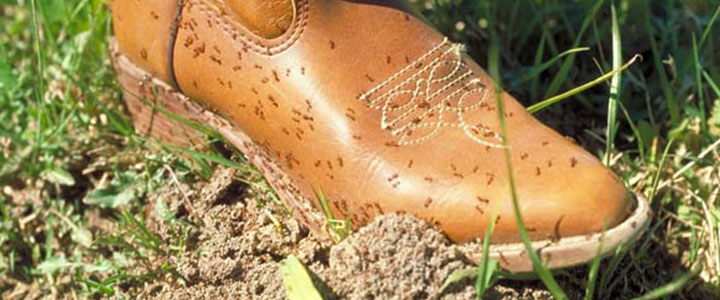Have ants invaded your yard or home?
Pro Pest Care LLC is here to help rid your lawn and home of ants. Call today 410-739-8207 for a free pest control evaluation.

Ant Pest Control
Ants are a very common house-hold problem. We typically see carpenter ants, pharaoh ants, odorous house ants, little black ants, and pavement ants on the Eastern Shore of Maryland. Ants are drawn to areas of high moisture and like foods similar to us so they are usually found in kitchens and bathrooms. All ants live in colonies of hundreds or thousands of individuals. Their worker ants forage for food and leave chemical trails when they find food so that other ants can find the food and help bring it back to their colony. This explains how easy it is to wake up and suddenly have hundreds of ants in your kitchen after leaving a few dishes in the sink. Since only a percentage of the population are foragers, the rest of the ant colony is dependent on the worker ants to bring them food. We can use this knowledge of their behavior to break the cycle of ant propagation in your home.
Being able to properly identify different ant species can be critical to a successful eradication program.
Knowing the life cycle of ants is critical for a successful eradication program. Most home-owners will only spray the ants they see. This means new ants will soon take their place. However, if the nest is inside the home, the only way to eradicate ants is to eliminate the nest. If the nest is outside, we can target the nest or prevent them from getting indoors. As your pest control specialist, we can manage infestations by pest proofing and sanitation, barrier treatments, treating nests directly, and using baits to deliver pesticides directly to the source- the nest. Don’t mess around. Call the pros at Pro Pest Care.
Carpenter Ants
The black carpenter ant is the most common carpenter ant species in the Northeast. Houses in wooded areas may be under constant pressure from carpenter ants as stumps, rotting logs, and tree holes provide excellent nesting sites. A particular concern with carpenter ants is that they can nest in and damage structural wood. High humidity is necessary for them to grow. They do not eat the wood but do hollow it out to produce nesting grounds. This is why they can be found even in pressure treated wood. The damage to structural wood can be severe. In addition to their primary colony, they can produce satellite colonies when they need more space. Potential satellite colony nests can include insulation, porch columns, hollow doors, shower curtain poles, drop ceilings or crawl spaces. Since these ants can be found in high population in decaying wood, a home-owner should be vigilant and careful when bringing firewood into the home. The greatest foraging activity can be seen in the spring and another smaller peak in the early summer. Ants will often wander along man-made guides such as drive-way or wall edges. They may use the same trail year after year. You can sometimes follow foraging ants to see if they lead you to the nest.
Pharoah ants
These ants are particularly worrisome because they can spread harmful bacteria such as salmonella, streptococcus, and clostridium.
Odorous House Ant
These ants release a coconut odor when crushed. Because these ants require a lot of moisture, they are typically found during rainy weather. They nest in sand, grass, or woodlands. Outdoors, these ants can be found in moist, shady areas, such as under stones, boards or patios. Indoors, they may nest in a wall near hot water pipes or in the floor under toilets. Since they are not sensitive to cold weather, they can be found year-round. They are known to feed on meat, vegetables, and dairy products. They can be common in the summer months.
Little Black Ants
They are very tiny and they derive their name from their jet black appearance. They enjoy greasy foods.
Pavement Ants
They are the most common in commercial buildings. They get their name from their habit of nesting under pavements and sidewalks. Inside you may find them inside walls, in insulation, or under floors. They feed on meat, bread, cheese, nuts, sweets, and grease.
